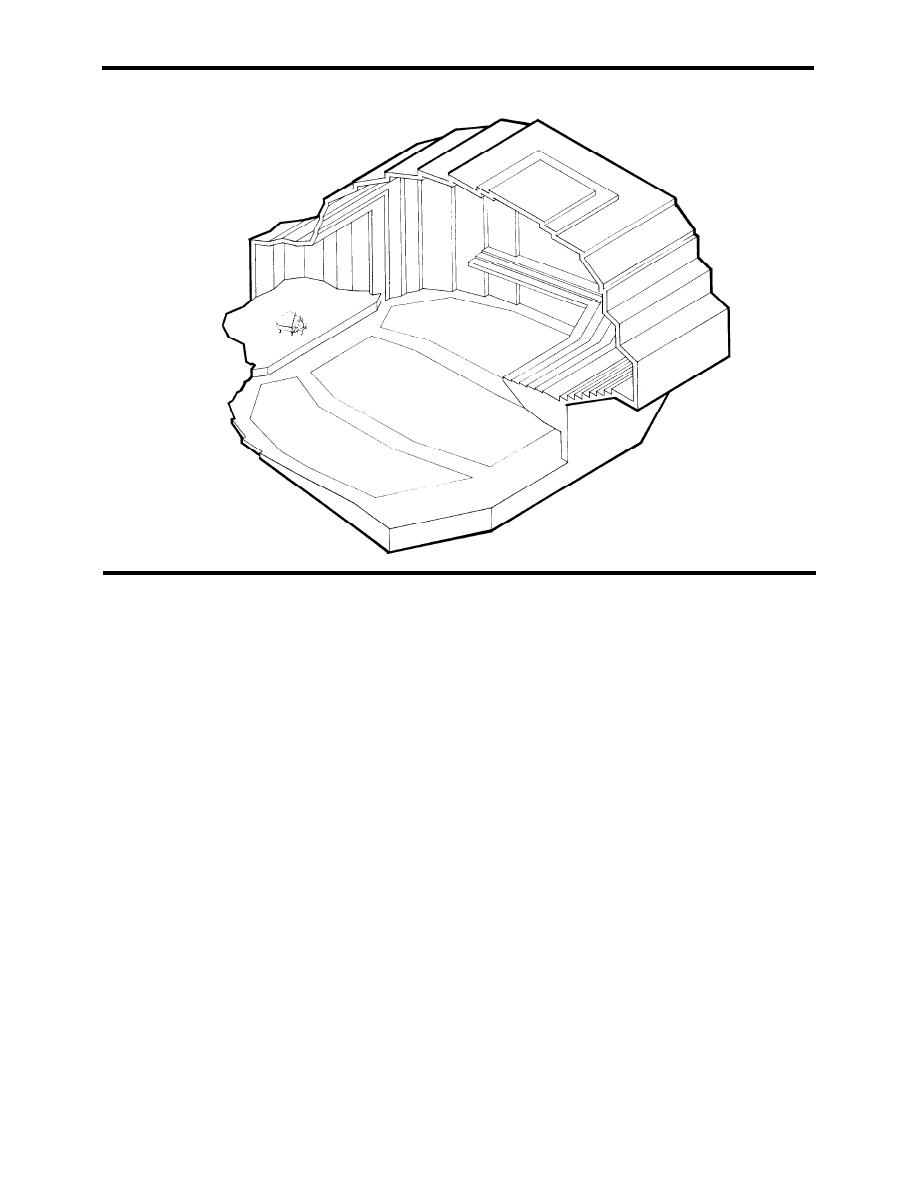
DG 1110.3.120
DESIGN GUIDE: MUSIC AND DRAMA CENTERS
JANUARY 1981
CHAPTER 3: MUSIC ROOM QUALITIES
F I G U R E 3-4.4
MUSIC ROOM-SHAPED FOR HEARING
7. Perceptual Psychology
needs, it is also more costly to replace. Therefore
Room ambience is a description of how people
good built-in permanent equipment has real
look in terms of color and modeling of features.
value. All theatrical equipment is subject to high
standards of construction and installation to limit
It is also how the Room looks in terms of color
and "drama". Concert lighting is relatively sim-
noise generation.
ple. Since there is usually little movement, light-
2. Access
ing shifts add interest and relative brightness fo-
cuses interest.
There must be access to the stage for piano,
chairs and stands, musicians and risers. Provid-
ing a suitable number and size of openings can
8. Overall Influence of Vision Factors, Music
affect the design of the orchestra enclosure.
Vision parameters mainly affect illumination,
Doors, for audience access and egress, should
room finishes and arrangement of performers
be limited in number and carefully sealed to re-
functionally. Physical design "improvements"
for sight lines should be carefully weighed
duce sound loss and noise intrusion.
against potential ill-effect acoustically.
3. Environment
C. OTHER FACTORS
Since the audience is relatively sedentary, noise
criteria are more stringent. Temperature and hu-
midity stability are extremely important to main-
Four other factors (see 3-3c) have qualitative im-
taining musical instruments in tune. House light-
pact on Music Room design. Brief comments
ing levels are slightly higher than for Drama.
below indicate the emphasis regarding Music
criteria.
4. Flexibility
In general, the ability to use the Room for dif-
1. Equipment
ferent music presentation types depends a lot on
Accessory equipment for Music is typically less
repositioning sound sources (musicians) in re-
extensive in quantity than for Drama, but since
lation to surfaces near them. These surfaces can
it is most often custom made to suit specific
3-19


 Previous Page
Previous Page
